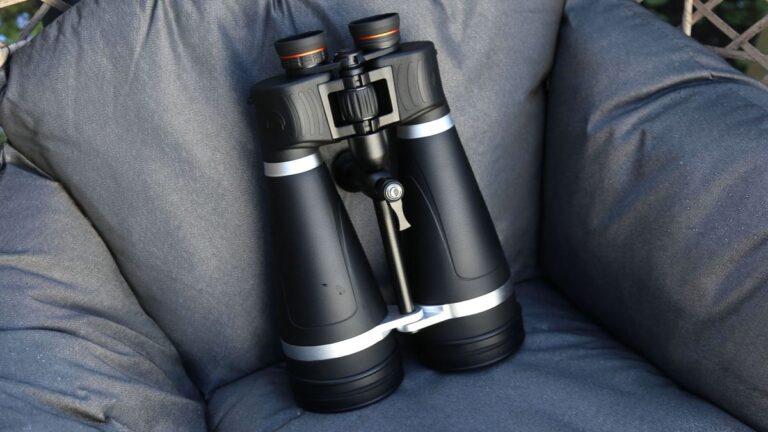
[ad_1]
The Celestron SkyMaster Pro 20×80 is a very special pair of binoculars. Not only are they some of the largest available, but they boast some of the finest quality optics around.
The usual advice for anyone starting out in stargazing is to spend a few months using binoculars before buying one of the best telescopes for beginners. That doesn’t apply to the SkyMaster Pro 20×80, which aren’t the kind of binoculars anyone should be buying if they don’t already know a lot about observing the night sky. In fact, the SkyMaster Pro 20×80 is a viable alternative to a telescope.
CELESTRON SKYMASTER PRO 20×80: KEY SPECS
Magnification: 20x
Objective lens diameter: 80 mm
Angular field of view: 3.2-degrees
Eye relief: 0.61-in (15.5 mm)
Weight: 86.4 oz (2.45 g)
It’s the flagship model in Celestron’s SkyMaster Pro line-up of porro prism binoculars that also includes the step-down (in terms of size) SkyMaster Pro 15×70 binoculars. There is a bigger pair of binoculars in Celestron’s stable — the SkyMaster 25×100 — but as well as being almost twice the weight of the SkyMaster Pro 20×80 that pair lacks the superior (and proprietary) XLT coated optics that the two ‘Pro’ models include.
Aimed at amateur astronomers wanting close-up views of the night sky, all you need to add to the SkyMaster 20×80 is one of the best tripods or one of the best travel tripods and you’ll have impressive views of the Moon, planets, galaxies and much more besides.
Celestron SkyMaster Pro 20×80 binocular review
Celestron SkyMaster Pro 20×80 binoculars: Design
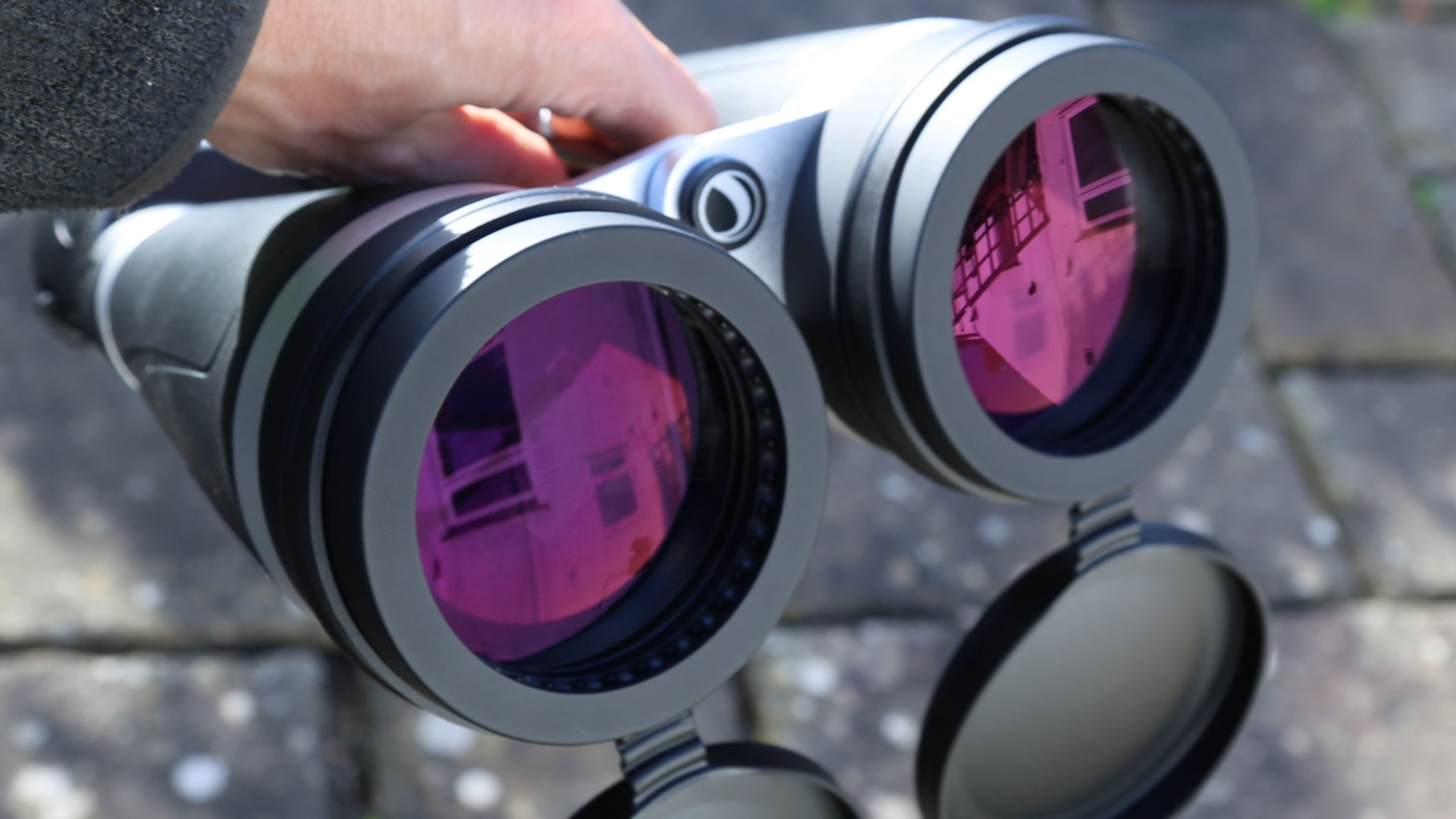
- BaK-4 porro prism design
- XLT coated optics
- Center support rod
Everything about the polycarbonate and aluminum SkyMaster Pro 20×80 screams quality, from the waterproof rubber covering to Celstron’s own XLT multi-coated optics, attached objective lens caps and accessories. As with all large objective binoculars for astronomy, the SkyMaster Pro 20×80 uses a porro prism design, largely because it allows in the most light possible.
That’s critical when going hunting for deep-sky objects. Porro prism binoculars are generally bigger than the rival roof-prism optical design, and their 86.4oz/2.45g bulk is not inconsequential. However, with 80mm objective lenses and 20x magnification binoculars like this will always need to be mounted on a tripod. To make that easy, Celestron has fitted the SkyMaster Pro 20×80 with a center support rail. It sits in the gap between the two tubes, stretching from the optical engine to a couple of teardrop-shaped fixings close to the objective lenses that it keeps solid and taught. However, it also allows a little movement so you can adjust the position of the tubes to suit your own eyes.
ADDITIONAL KIT
Shoulder bag
Neckstrap
Objective lens caps
Rainguard for eyecups
Interchangeable flared eyecups
Reflex Sight Rail (RSR) for red dot finder
On that rod is a tripod adaptor that can be ranged up and down before fixing in place. On the bottom is a 1/4-inch tripod thread, which will typically be fitted to the base plate provided with a ballhead or pan-tilt head.
Also included are a few small, but perfectly formed accessories. The most useful is its flared rubber eyecups, which can be swapped out for the existing regular flat eyecups that are included as default. They allow the observer to keep ambient light sources from ruining the view. Another handy accessory in the box is a Reflex Sight Rail (RSR), a small tough plastic hinge that can be secured to the SkyMaster Pro 20×80’s center support rod to create a platform for attaching a red dot finder. A red dot finder is a useful pointing tool that superimposes a small red dot on the sky to make it easier to find targets, though has no magnification (they can be purchased at low cost online). You’ll have to supply one yourself, but the possibility of adding one to the SkyMaster Pro 20×80 only adds to its reputation as an impressive and versatile alternative to a telescope.
Celestron SkyMaster Pro 20×80: Performance
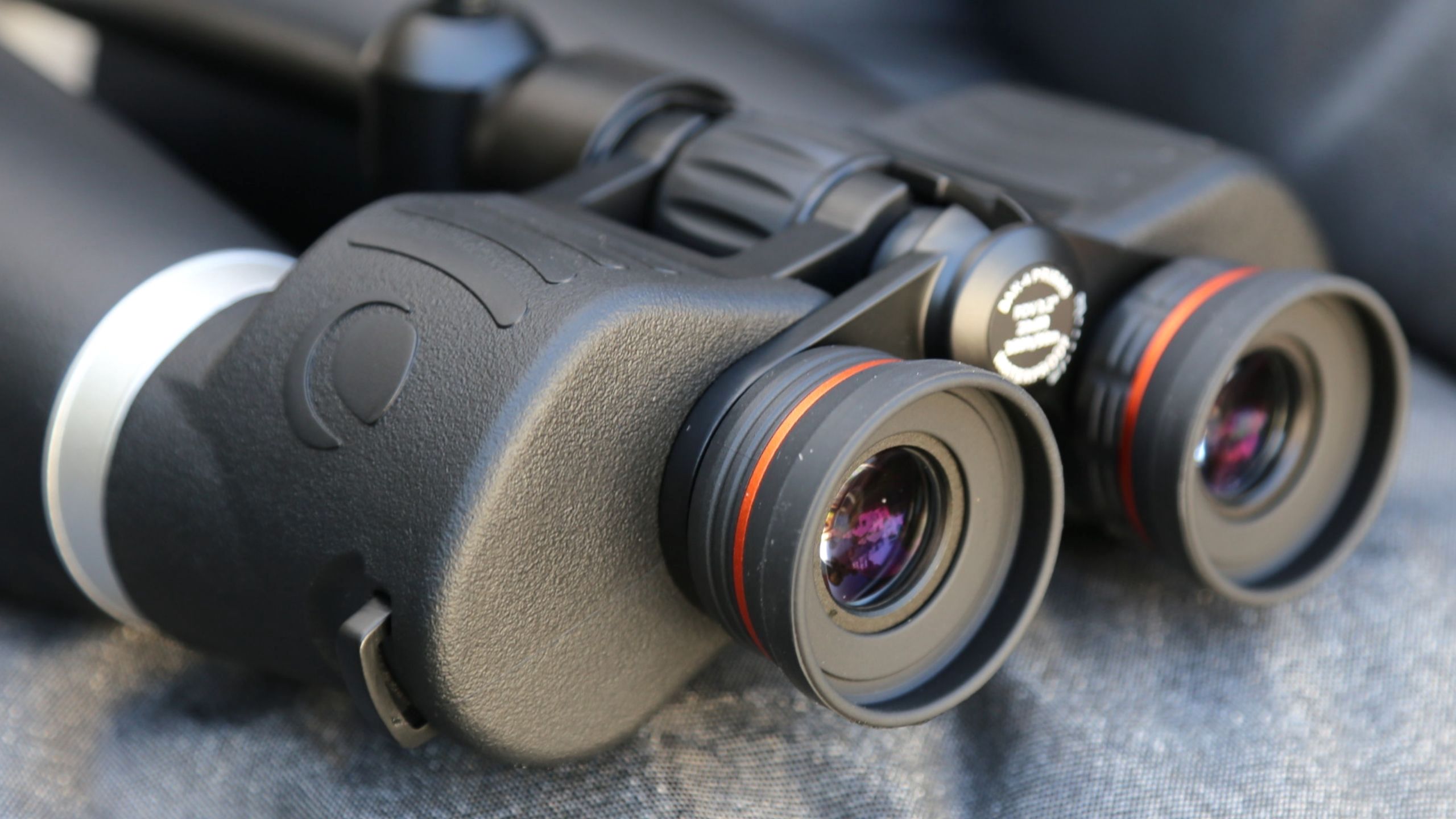
- Sharp, bright and contrast-heavy images
- Requires full-size tripod
- Flared eye cups fall off too easily
If you’ve seen too many small telescopes gathering dust and want something a little easier to store and travel with, the SkyMaster Pro 20×80 makes a good case. We really like the tough and well-made shoulder bag that ships with the SkyMaster Pro 20×80, though we do wish it had a pocket or two for storing the two flared eyecups. Those swappable eyecups work really well, especially in situations where people are waving torches around or there are light sources behind you, but they do have a fatal flaw. Despite the regular eyecups being perfectly stable when in place the flared versions tend to pop off. That’s not ideal in the dark. We had to use masking tape to keep them in place, though they do actually need to be removed at the end of an observing session when the figure-of-eight rain guard is put back across the eyecups.
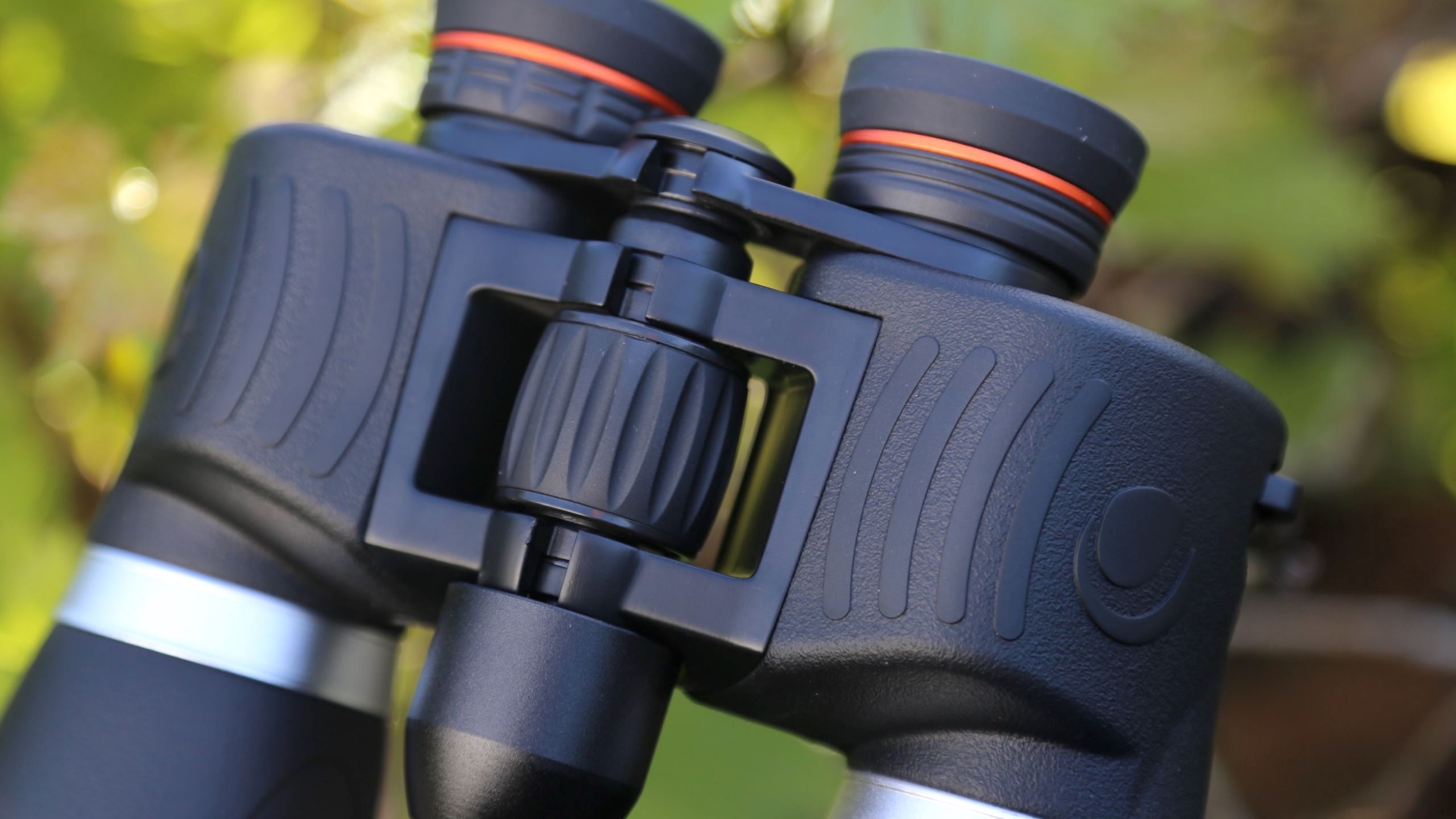
Everything else about the SkyMaster Pro 20×80 impresses, with its images outstanding. They allow in plenty of light from distant objects, with bright images that boast lots of contrast and zero ghosted images from stray light. We trained the SkyMaster Pro 20×80 on the Pleiades (M45), the Great Globular Cluster in Hercules (M13) and the Andromeda Galaxy (M31) — all found manually using sky charts and with a red dot finder mounted atop the center support rod — and enjoyed the immersive stereo views, which are sharp across the entire field save for the very extremities. It’s also really helpful for beginners that the images are the right way up (most telescopes invert the image, which can be confusing).
Celestron SkyMaster Pro 20×80: Functionality
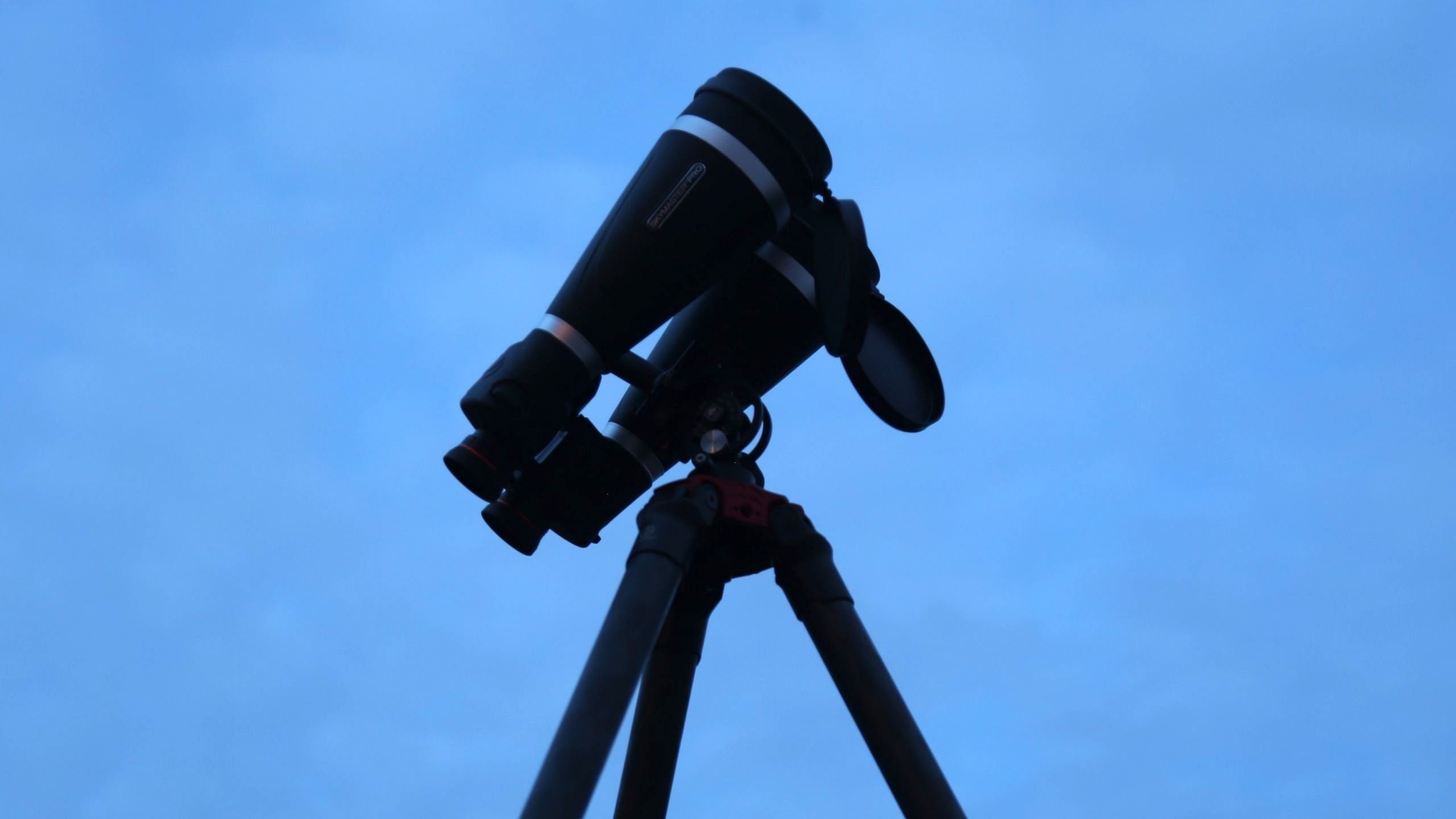
- Best with a full-size tripod
- Requires a separate pan-tilt head
- Well made shoulder bag
One thing to remember about the SkyMaster Pro 20×80 is that it can only be as steady as the ball-head and tripod you supply to support it. Considering its weight, don’t skimp on the ball head or, even better, go for a pan-tilt head. It’s going to be much easier to use the SkyMaster Pro 20×80 to focus on deep sky objects if you don’t also have to take into account how much your tripod droops. That’s particularly true when observing objects reasonably close to the horizon because that’s when the tube-heavy SkyMaster Pro 20×80 will most lack balance.
It’s also worth considering using a full-size tripod (we used one that stretched to 180cm/70.7-in, which was perfect not because we’re very tall, but these binoculars are 32cm/13 inches long, so when tilted upwards stretch down farther than you might expect).
Setting them up was easy, though you do have to get them balanced on a tripod and aligned to your eyes first. We found the all-important focus and diopter adjustment and focus wheels to be both easy to use yet impossible to accidentally knock out of position.
Should you buy the Celestron SkyMaster Pro 20×80 binoculars?
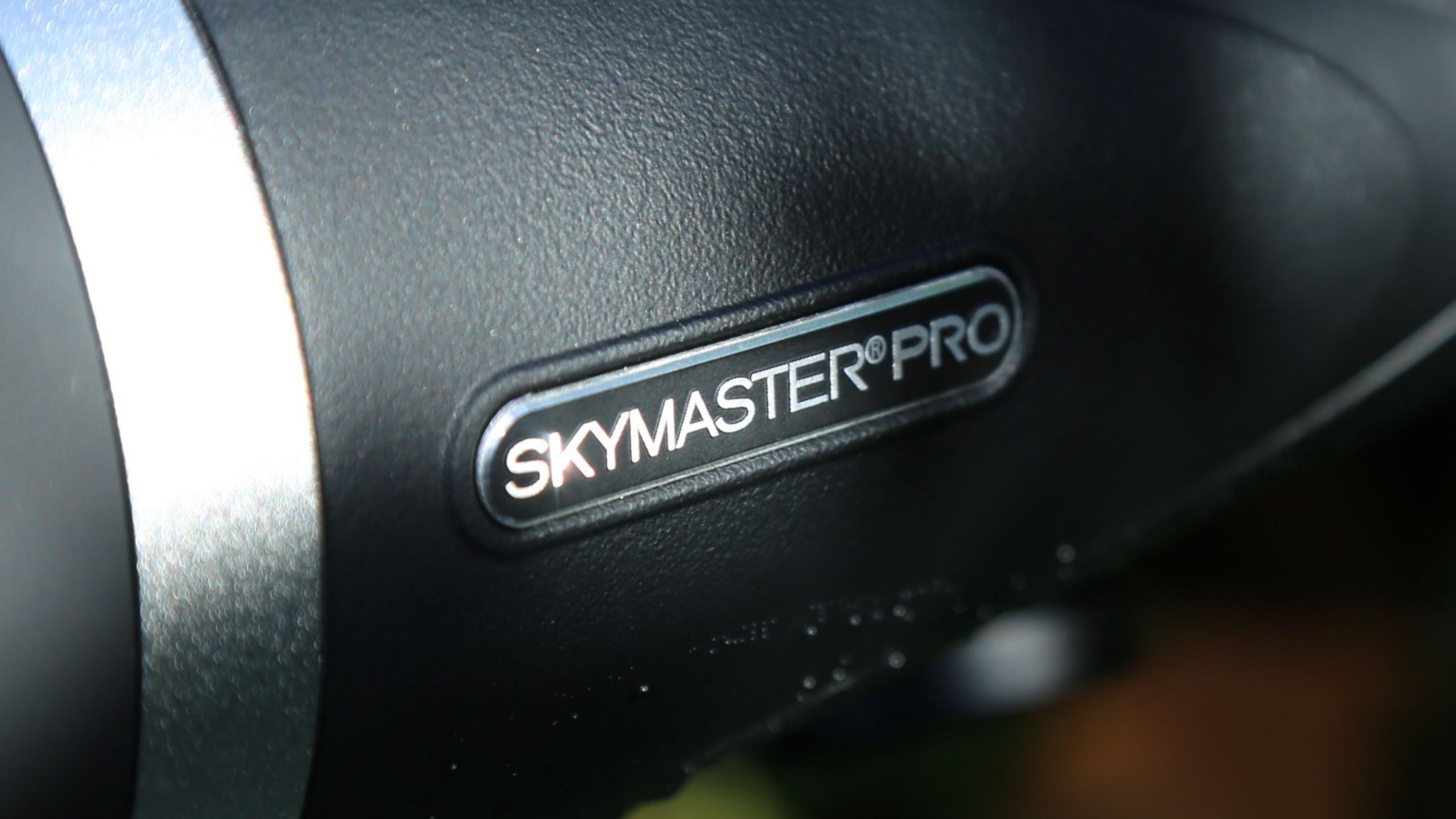
The SkyMaster Pro 20×80 is for amateur astronomers who’ve had an entry-level pair of binoculars for a few years, have learned to navigate the night sky and now want something not just a bit bigger, but a lot bigger — and with the best build quality around.
Solid, weatherproof and fitted with a support rod and tripod adaptor, the SkyMaster Pro 20×80 is a serious astronomical instrument that is best seen as a much more portable version of a small telescope. Yes, those eyecups are a bit fiddly, but we love the ability to mount a red dot finder, which makes the SkyMaster Pro 20×80 seem even more like a viable alternative to a small telescope.
This pair does need a tripod, and the darker the skies the better for getting eyes-on with star clusters, galaxies and nebulae, but thanks to the excellent shoulder bag that’s something you can easily do. We’d even suggest storing the SkyMaster Pro 20×80 in the back of a vehicle for casual use when traveling, though the caveat is that a very large tripod is required.
If the Celestron SkyMaster Pro 20×80 binoculars aren’t for you
There are lower-cost alternatives to the SkyMaster Pro 20×80, such as the Celestron SkyMaster 20×80, which is essentially identical save for its lack of XLT optics and a more affordable price tag (and less impressive build quality). You can tell the two apart by the silver loops around the tubes of the SkyMaster Pro 20×80.
You could also upsize to the Celestron SkyMaster 25×100 binoculars, which increases the size of the objective lenses still further, though be prepared for a slight drop in the build quality when compared to the SkyMaster Pro 20×80.
If you like the sound of the SkyMaster Pro 20×80, but fear it might be too big and heavy and would rather have something you can hold in your hands then consider the Celestron SkyMaster Pro 15×70, which reduces both the size of the objective lenses and magnification but still offer excellent close-ups of the night sky in a similar, yet smaller package.
[ad_2]